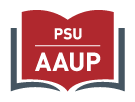The Chronicle of Higher Education
By Emily Deruy
August 3, 2016
Bernie Sanders may be out as a presidential contender, but his proposal to make public college free has worked its way into Hillary Clinton’s education plan. While the plan is making some private colleges nervous, his campaign has succeeded in furthering a broader conversation among university admissions directors about how to make access to higher education more equitable.
The applicant pools at selective universities don’t typically reflect the broader population, acknowledged Jim Rawlins, the director of admissions and assistant vice president of enrollment management at the University of Oregon, during a recent roundtable discussion with a handful of other admissions leaders in Washington, D.C. The different schools in attendance—both public and private, small and large—agreed that needs to change.
But not all schools are convinced that making in-state public schools free for students from families earning less than $125,000 a year by 2021, the gist of Clinton’s plan, is the right approach. Monica Inzer, the vice president and dean of admission and financial aid at Hamilton College, a small private school in rural upstate New York, expressed concern that if such a proposal were to become a reality, some families might not look at private schools that could be a good fit and equally affordable.
As Jim Nondorf, the vice president for enrollment and student advancement and dean of admissions and financial aid at the University of Chicago, said, students often hear a sticker price and don’t realize the actual cost for low- and even middle-income kids may not be as steep. His school, for instance, offers need-blind admission and promises to meet 100 percent of a family’s demonstrated need. Hamilton eliminated merit aid in 2007, and went completely need blind several years later. The school also runs an emergency aid fund to help students who cannot afford to fly home to visit a sick parent, or clothes for a job interview. But many schools, including many historically black colleges, don’t have the funds (Hamilton’s financial aid budget alone is more than $38 million) to accommodate such students, and losing middle-class kids to free public schools could make supporting poor students even harder, or force schools to take only the very richest students who can pay full price.
“I think what would happen is, we would have to become more elitist, because anybody who is not really wealthy is going to go to take the free option,” Sheila Bair, the president of Washington College in Chestertown, Maryland, told Politico recently. “I don’t want us to be elitist. I want us to have a diverse student population.”
